I’ve been asked what it’s like to garden in the Washington, D.C. metro area, and in a word I’ll say — interesting! We are in the middle of the Atlantic seaboard, so we experience the weather extremes of both North and South and everything in between. The weather seems constantly changing, so much so that we locals joke: “If you don’t like the weather, just turn around!” It is rarely the same two days in a row.
I live and garden in the Mt. Vernon section of Alexandria, in Fairfax County, Virginia (what a mouthful!), on property once owned and farmed by George Washington. My home is by the banks of the Potomac River, just 1 1/2 miles from the estate’s main house. This is now the eighth house I have lived in since moving to Alexandria in 1969, and each has had its own distinct micro climate!

Azalea in full bloom in my east garden. These beautiful bushes are treasured by gardeners in our region.
We are most famously known for our cherry blossom trees, but there is an amazing bounty of other beautiful natives: azaleas, dogwoods, rhododendrons, to name a few. We take pride in having a large number of flowering tree varieties. Many have been brought in by people from all over the world to represent their home cities, making for a stunningly beautiful springtime! In addition to many home garden tours throughout the year, we have the amazing U.S. Arboretum and the U.S. Botanic Gardens in Washington, D.C.
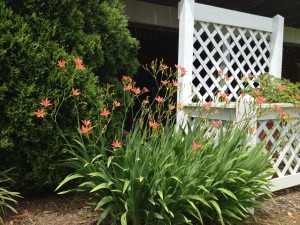
This is a blackberry lily. These were grown by Thomas Jefferson as a “curiosity.” The beautiful coral flowers give way to seedpods which look like blackberries in late summer.
This region is filled with history buffs (myself included!) who enjoy planting our gardens with some of the same plants as those of our country’s forefathers.
Colonial gardens were much more than ornamental; they served practical needs. Fruit trees lined walkways and often were grown in an espalier style (attaching the branches to walls or fencing) for convenience in harvesting. By growing fruit trees against brick walls, or lining herb and vegetable rows with brick paths, colonial gardeners would add warmth to the plants in cool months, extending their growing season — very important when one’s survival depended on your crop! In the picture below is a fig tree which I have been pruning to develop sideways branches for espalier. I will attach it to my east facing fireplace wall when it grows a little larger.
Many of the varieties of heirloom flowers, fruits and vegetables from those days are still very popular in today’s gardens. I have collected several for my own garden from the Virginia estates of two of our former presidents. My blackberry lily is from Thomas Jefferson’s Monticello, in Charlottesville, and I have a special variety of boxwood from Mt. Vernon. And of course, my favorite little fig tree started as a cutting from there, too.
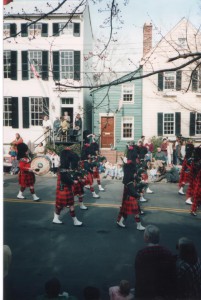
An example of the homes in the historic section of Old Town Alexandria. My little green house in the center was built in 1790, although very tiny inside, it has a 50 ft. deep back garden!
We have diverse architectural styles, from the quaint row houses of Old Town Alexandria dating back to the mid-1700’s, to the contemporary home designs of Hollin Hills (which was added to the Virginia Landmarks Register in late June and has been recommended to the National Park Service for addition to the National Register of Historic Places), each with their own unique gardening styles ranging from practical to formal to natural. So, no matter what style appeals to you personally, we have it here!
If you happen to be visiting Washington, D.C., why not tour the surrounding neighborhoods to observe the pretty gardens? If you see me tending mine, please stop and say hi and tell me about yours. Happy gardening!
Update- Here is a photo of the blackberry lily with it’s “blackberries” in bloom. The seedpods really do look like blackberries!

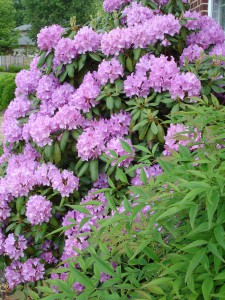
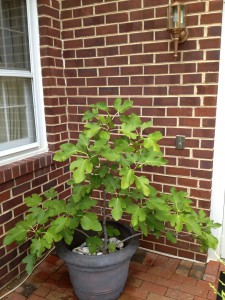
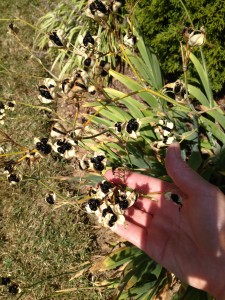
Leave a Reply